
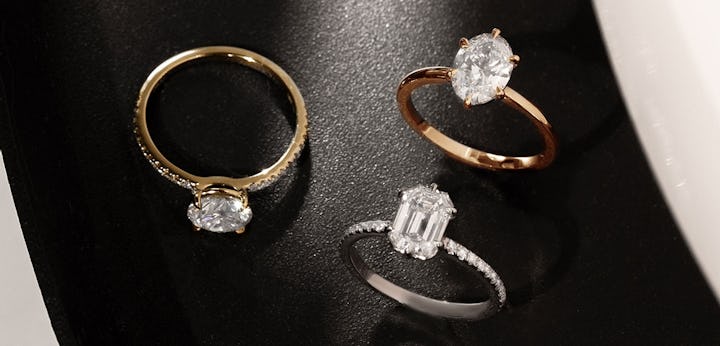
Colored Gold: Usage and History
Angelica Frey | August 25, 2023
In its natural state, gold is an orange-yellow metal known for being malleable, ductile, and soft. On the other hand, it is non reactive and is resistant to most acids. Throughout recorded history, gold has been used to make coinage, jewelry, precious objets d’art, and ornaments.
Gold’s most common colors are yellow, rose, and white, and they’re the result of the act of combining pure gold with other metals, something that has been done for centuries both for aesthetic and durability-related reasons.
What Is Colored Gold
Pure gold is too malleable, which makes it unsuitable for jewelry. Mixing gold with other metals such as copper, silver, and palladium creates gold alloys, which are commonly used in jewelry. The characteristics of each metal that is combined with gold create varying colors and shades of gold alloys. Rose, yellow, and white gold are the most popular and most commonly used gold colors, but there are many more colorways available.
Origin of Colored Gold
Different colors of gold have appeared throughout ancient history. Ancient Egyptians, Accadians and Persians used what we can now equate to green gold. Its usage has been documented for as far back as 860 BC under the name electrum, a naturally occurring alloy of silver and gold. Curiously enough, the word electrum was also used in reference to amber.
What we now refer to as Rose Gold has been documented since 19th-century Russia, when jeweler Carl Fabergé used it for his famed, adorned eggs. It gained substantial popularity in mainstream jewelry in the early 2010s, due to its soft-colored hue and its inherent vintage-inspired feel.
White Gold was first invented in the late 19th century, but became commercially available in 1912 in Pforzheim, Germany. Pforzheim is a historical watchmaking town in Southwest Germany that, up until the late 20th century, had a leading role in the jewelry and timepiece industry. White gold gained substantial popularity in the 1920s as a cheaper and more readily available alternative to platinum.
The Colors of Gold
Yellow, red, and white gold are the most common shades of gold used in contemporary jewelry. VRAI offers bridal jewelry in 18k white and yellow gold and in 14k rose gold, while our fine-jewelry line uses 14k gold in all three colors.
Be the first to know
Hear about our latest designs and upcoming events.
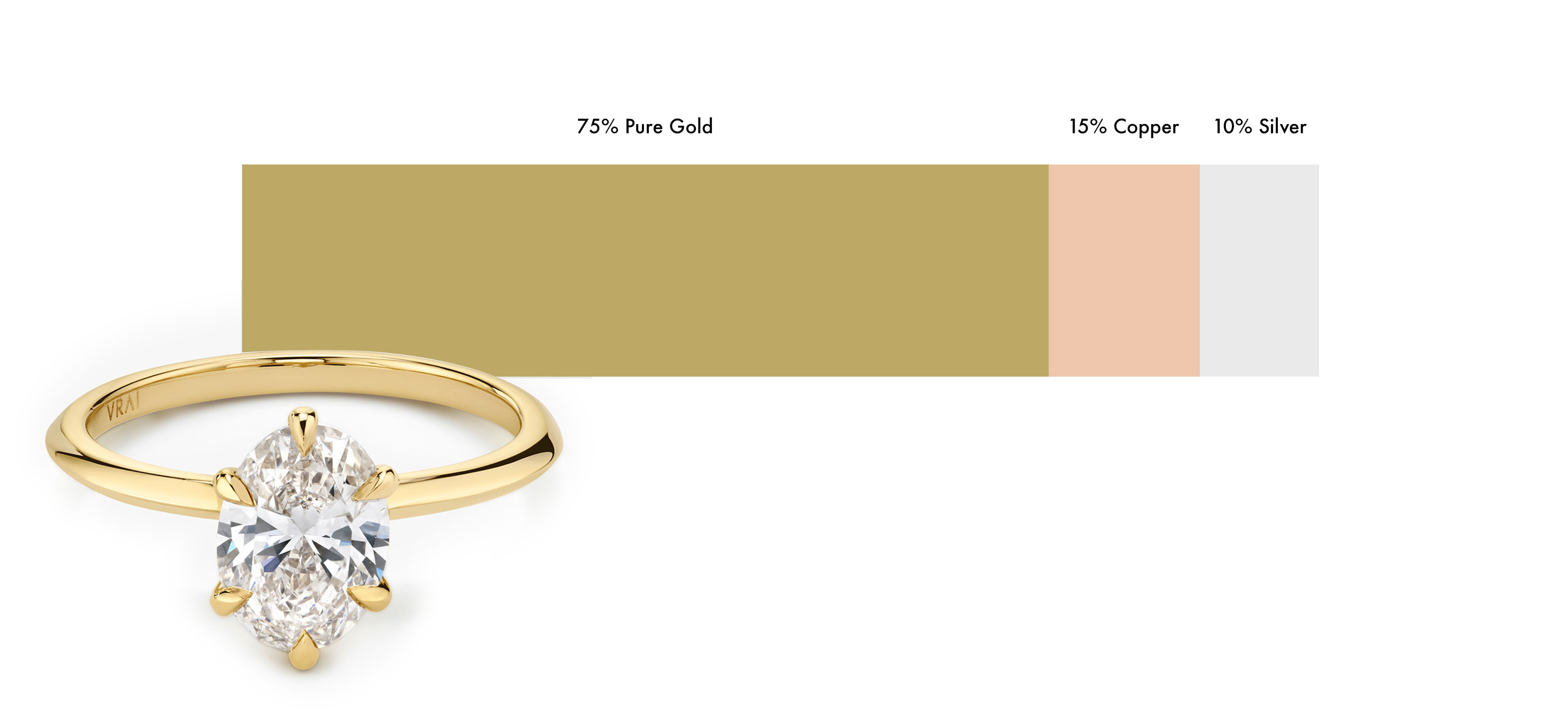
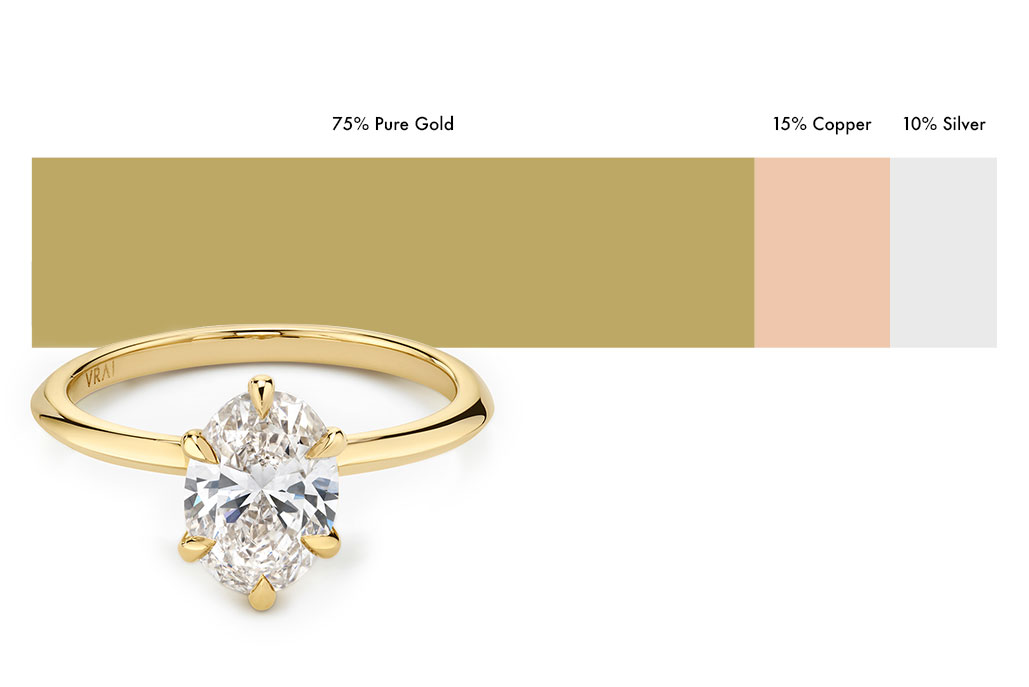
Yellow Gold
Yellow gold combines pure gold, fine silver, and copper, resulting in a rich and warm golden hue. If you choose yellow gold, you can more easily justify selecting a diamond with a warmer color as the yellow gold setting will offset the added warmth of the diamonds giving you more flexibility within your budget. We recommend diamonds between G-J in color.
However, many people like the look of a more colorful diamond, which is why we occasionally offer faint (K) colors. Yellow gold is our most popular and classic color choice as it has stood the test of time. Our yellow gold weding rings are especially popular as our our engagement rings in yellow gold settings.
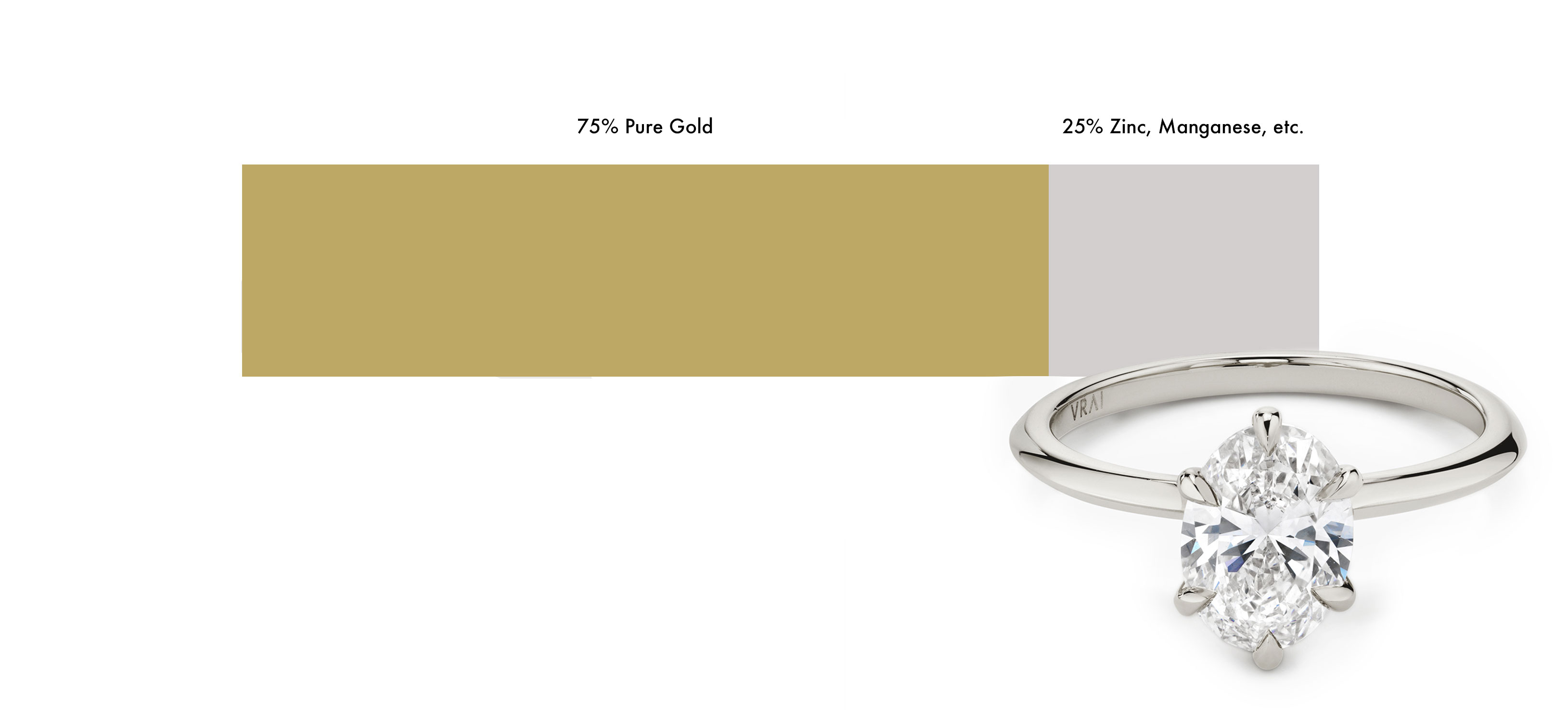
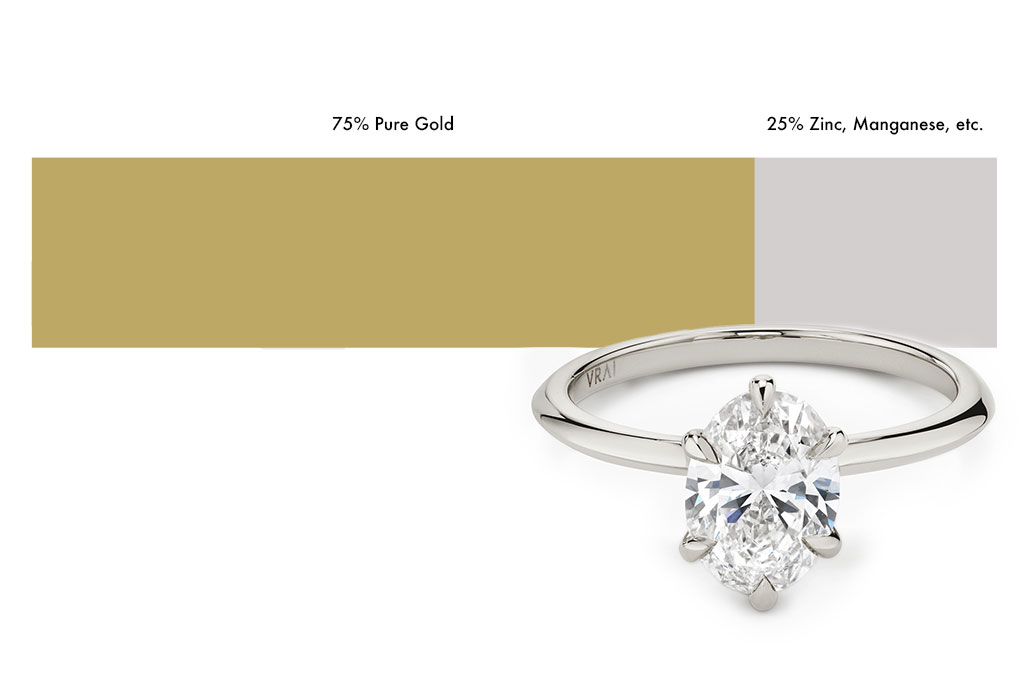
White Gold
To achieve its white color, pure gold is often mixed with zinc, palladium, or nickel alloys. White gold rings are also dipped in rhodium, giving them a brilliant, chrome-like color, while also protecting them from scratching. However, to maintain its white luster, white gold should be “re-dipped” every few years - a simple and affordable upkeep included in our lifetime care package.
White gold’s bright white color emphasizes yellow coloring within the diamond so we recommend selecting a diamond that is H+ on the color scale if you're looking for a white gold engagement ring.
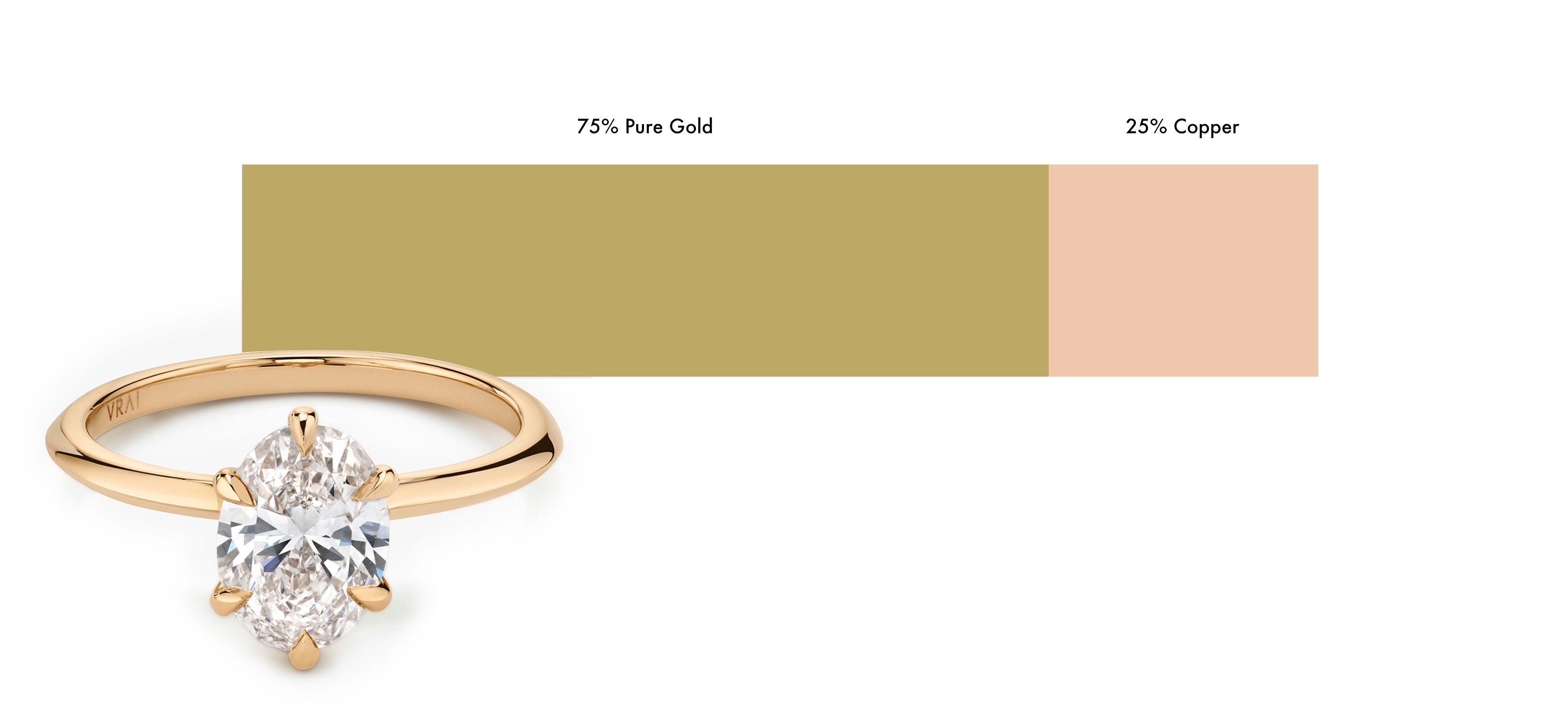
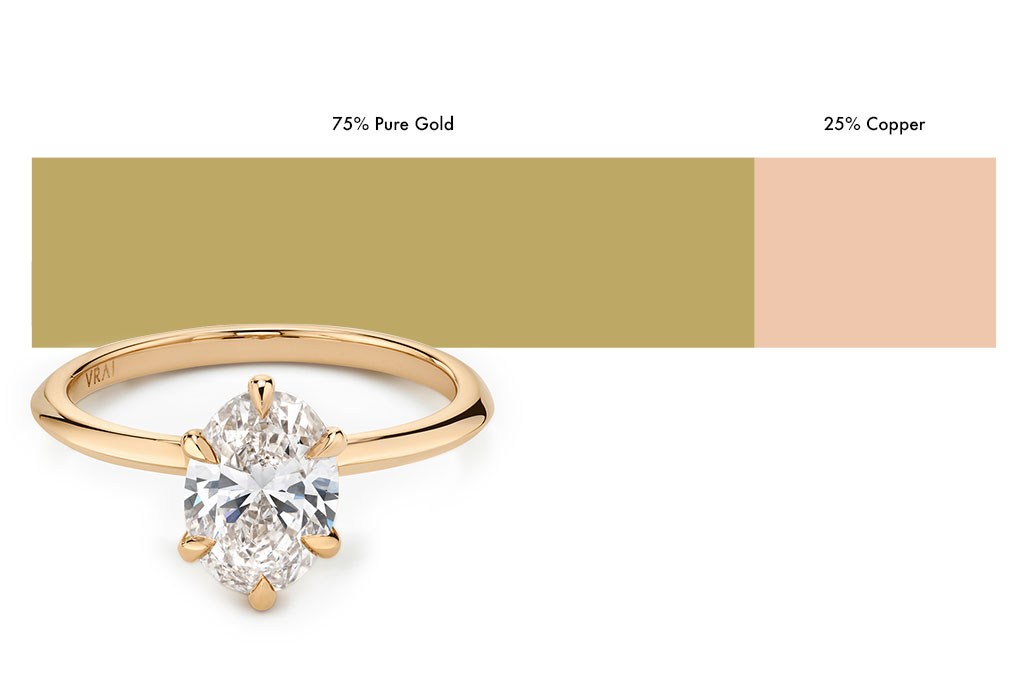
Rose Gold
Yellow gold mixed with copper alloys is what gives rose gold its known pink finish and ethereal feel. The more copper alloys added, the deeper the rosy hue. That means that 14k rose gold can either be slightly more pink or have silver alloys added to create balance. Rose gold – once called red gold or Russian gold – is considered romantic and delicately feminine; rose gold has been popular for generations and ages gracefully. Our rose gold wedding rings have a timeless, classic look. You can also look into an engagement ring in rose gold which complements many different settings.
All About Gold Karats
Commercially available gold comes in different degrees of finesse and purity, which measures the percentage of actual gold present in the gold alloy. The unity of measure of the degree of purity is known as karat. One gold karat is 1/24 of the whole.ure gold is 24 karat gold.
This system originated in the middle ages with a medieval coin called “mark.” A mark weighed 24 carats, and was made with an alloy of gold, copper, and other metals. “The purity of the coin was then expressed by the proportion of its carat weight that was actually contributed by gold,” explains Encyclopedia Britannica.
9K Gold: 37.5% gold; 62.5% other metals. 9k gold qualifies as solid gold and is great for entry-level jewelry. It can appear more red than others because the low degree of actual gold lets the color of copper really come through.
10K Gold: 41.7% gold; 58.3% other metals. 10k gold has a good color payoff and is strong and durable.
14K gold: 58.3% gold; 41.7% other metals. 14k gold is high-quality and durable. With a good color payoff, it represents the best compromise between price and actual quality. VRAI’s fine jewelry and VRAI’s rose gold bridal jewelry come in 14k gold.
18K Gold: 75% gold; 25% other metals. If you want strength and purity for your jewelry, 18k gold is the best option. It should be noted, however, that in 18k gold, the yellow color is more predominant, so 18k rose gold will look more orange-red than rose-tinted. VRAI’s bridal jewelry in white and yellow gold comes in 18k gold.
24K Gold: 100% gold. Pure gold is commonly used for gold coins or bars, which people may purchase and sell as an investment, and for medical devices. It is not suitable for wearable jewelry.

